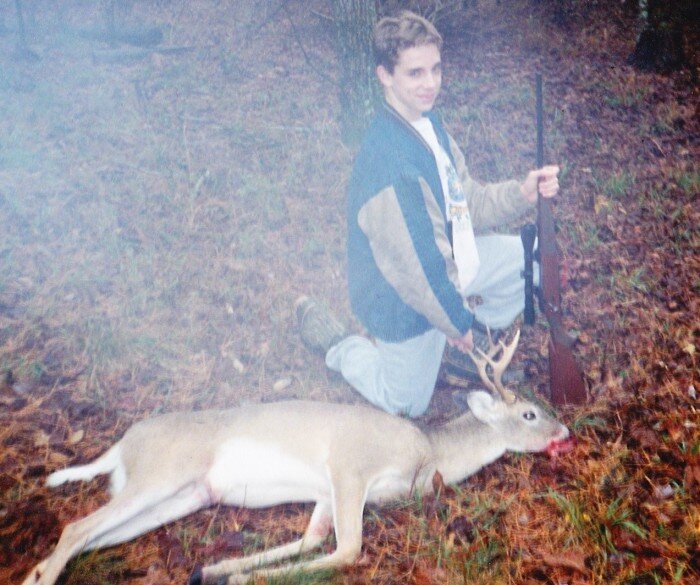Photo 101: Understanding ISO Speed
Despite snowy, low-light day, I was able to stop the action of this bobcat thanks to a high ISO setting and fast shutter speed.
Understanding ISO speed is a key to unleashing your creative photographic talents.
ISO is an acronym for International Organization for Standardization. Whoopee. Hey, they had to call it something, and that something is a worldwide standard benchmark for camera sensor and film sensitivity to light.
The sensors in digital cameras, like the chemical films in “old fashioned” cameras, can absorb light at various rates. ISO speed numbers were established to make these rates uniform at various ISO settings from 24 to 6,400. Those numbers could go down or up as technology improves. The point is, every camera maker must build its sensor’s to match these numbers so photographers can get consistent exposures. High ISO numbers mean sensors absorb light quickly. Low numbers mean they absorb light more slowly.
Okay. So your camera has a sensor that is variably sensitive to light. What do you do about it? You select it to aid in your creative use of shutter speed and aperture (depth-of-field.) And here’s how it all works:
The higher the ISO speed number you select, the faster your sensor will absorb light. The faster it absorbs light, the faster you can set your shutter speed. Or the smaller you can set your aperture. Or a little of each.
You’d want to set a fast shutter to stop action. You’d want a wide open aperture to minimize depth-of-focus to create a soft background and make your subject stand out. You’d want a stopped down (small) aperture like f-22 to maximize depth-of-focus to clearly show the subject, foreground and background.
Let’s say you’ve set ISO 100 in your camera and its meter calculates the ambient light calls for 1/15th second shutter speed at f-4. You’re shooting a 200mm lens with maximum aperture of f-4 and your subject is a Boone & Crockett buck that cooperatively keeps walking back and forth on an open field 30 yards away. Enjoy your blurry deer pictures. You aren’t going to stop the motions of a trotting deer at 1/15th of a second. You’ll need at least 1/250th for that, and 1/500th would be even better. Change 1/15th shutter speed to 1/250th and you’ll stop the deer, but it will be about as bright as a black cow against the midnight sky under heavy overcast. In other words, your shutter won’t be open long enough for the sensor to absorb enough light for a proper exposure.
A faster ISO would have let me stop this buck with a faster shutter speed.
ISO to the rescue. Double it to 200 and you can cut your shutter speed in half. But 1/30 of a second is still to slow. Increasing sensor sensitivity to ISO 400 lets you shorten shutter speed to 1/60th. (Note the halving and doubling numbers. We’ll get back to that.) Shorten shutter speed to 1/125 and compensate for the lost light by increasing ISO to 800. Finally abbreviate that shutter to 1/250 and make up for the lost light by turning ISO speed up to 1,600. You now have a shutter speed fast enough to freeze the motion of a walking deer because your ISO sensor sensitivity is high enough to absorb light at a faster rate. If your subject still shows a bit of motion blur, you can crank up shutter speed to 1/500 and compensate for the “stop” of lost light by increasing ISO sensitivity to 3,200. Enjoy the noise.
Noise? Wait. What noise? “Noise” in digital photography refers to the sandy or grainy look images take on at a higher ISO speed. Back in the film days, fast films got a similar look we called “grain.” Grain or noise give a raw, gritty feel to images and can be used creatively if it matches the subject. But if you want smooth, “clean” images, you need to keep ISO speed settings low.
Bit of a conundrum here. Do you insist on smooth, low-noise images or opt for the action-stopping shutter speeds? Your call, commander. Personally, if my goal is to capture moving subjects sharply, I’ll settle for the noise. Some noise can be removed in post production, and some camera sensors show less noise than others. You would be wise to expose a scene with your camera at low and progressively higher ISO settings to see how bad the noise gets and what you’re willing to accept. Generally you notice noise most in dark, blank areas like a sky, dark wall, black bear hide, etc.
In our next Photo 101 blog, we’ll revisit shutter speed, ISO and f-stops to flesh out proper and creative use of this reciprocal photographic triad. Once you fully understand it and its ramifications, a whole new world of creative tools are your to manipulate in the creation of dramatic images. For now, just know that a fast ISO can compensate for a slow shutter speed in low light settings.
# # #













